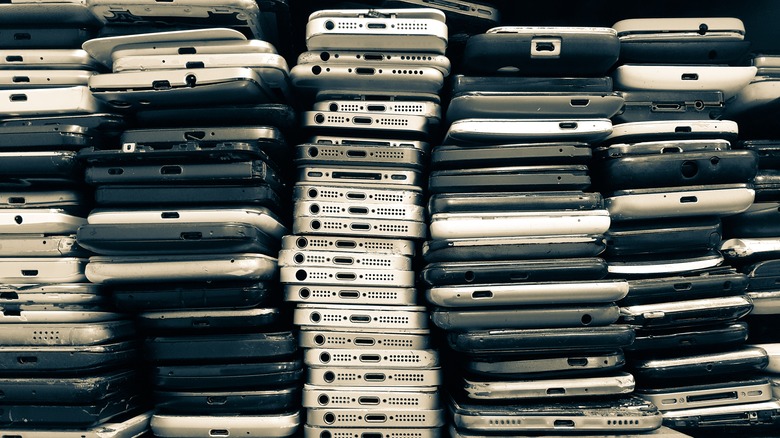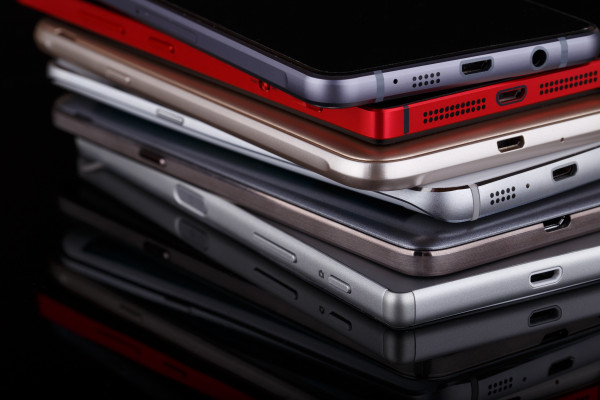Although second-hand gadget sellers have simplified the act of getting a smartphone or tablet, the process is not risk-free.
By Michael Akuchie
The smartphone has become an increasingly popular gadget on the African continent, according to a GSMA report. Africa’s adoption rate reached 51% in 2023, and the report estimates that more smartphones will be purchased by 2030—a trend expected to raise the penetration rate to 86%.
One major factor driving smartphone usage across Africa is the convenience it offers: users can readily access the latest news, entertain themselves with a mobile game or an Instagram reel, and even apply for a new job from their homes. As internet access continues to expand across the continent, the demand for smartphones has steadily increased.
While many people in North America and Europe have little difficulty purchasing a brand-new gadget, the situation is quite different for Africans. At a time when rising inflation has weakened many Africans’ purchasing power, second-hand gadgets such as smartphones and tablets have become the norm for consumers on the continent.
In Nigeria, for instance, new budget phones from brands such as Redmi and Infinix were sold for under ₦50,000 a few years ago. However, recurring local currency devaluation and rising import duties have made entry-level devices more expensive than ever—often costing ₦100,000 or more, depending on the model and specifications.

While local smartphone manufacturers such as Imosé and AfriOne operate in Nigeria, they are not yet able to meet the country’s growing demand for phones. Additionally, these local brands are not widely known. As a result, many Nigerians either save for several months to afford a foreign smartphone or, more commonly, opt to buy a used one instead.
Getting a second-hand gadget is relatively easy across Africa. A simple search for resale platforms in your region can reveal an overwhelming number of options. Buying a used gadget online is often more convenient than visiting a physical store to examine the phone before making payment—especially for buyers who live in distant cities or towns. With online shopping, all buyers need to do is browse a seller’s catalogue from the comfort of their homes.
In some cases, the buyer and seller agree to meet in person so the former can carry out a brief inspection of the device. More often, however, the buyer relies on the product photos uploaded on the device’s online listing and, if satisfied, transfers either the full sum or part of the total amount, with an agreement to complete the payment upon receiving the smartphone. There are many online gadget resale platforms, including Jiji, OList, and Facebook Marketplace. While many second-hand gadget sellers also manage physical stores, they maintain online storefronts to broaden their reach.
According to data from Statista, there are 322 million online shoppers in Africa. Every day, many people flock to online platforms in search of the best deals on smartphones, gaming consoles, or even power stations. In some cases, the gadget may even be brand-new rather than used. Although second-hand gadget sellers have made it easier to acquire a smartphone or tablet, the process is not without risk. A common concern with online shopping is the possibility that a seller’s profile may be fake.
Due to how easy it is to open an account on platforms like Jiji, scammers can create profiles and deceive unsuspecting buyers using stolen product photos and fabricated specifications. Some may even use temporary phone numbers to communicate with buyers, only to discard the numbers later to avoid being traced after payment has been made.

Another issue with buying second-hand gadgets online is the risk of ending up with a cloned version of the device. A cloned device refers to a replica of an actual smartphone. While it may closely resemble the original in appearance, a cloned phone typically lacks the same features and performance as the genuine version. Fortunately, it is fairly easy to spot a cloned iPhone or Android smartphone. Cloned devices are known to experience frequent software bugs and crashes. They also tend to have awkward back camera designs that differ noticeably from those found on genuine iPhones.
Another telltale sign is that cloned iPhones or Android smartphones typically run modified versions of the Apple and Android operating systems, respectively. In 2022, a fake iPhone factory was uncovered in Mozambique, according to a BBC report. Factories like the one in Mozambique are known for mass-producing cloned devices, which are then passed off as genuine products on online storefronts.
Another pressing issue with second-hand gadget resale platforms is the risk of buyers being scammed by criminals posing as prospective buyers. To finalise an online transaction, the buyer usually transfers half or the full amount, depending on a prior agreement. As proof of payment, the buyer sends a receipt of the transfer, prompting the seller to release the gadget. When both parties act in good faith, the exchange is seamless. Unfortunately, fraudsters posing as buyers have mastered the art of creating fake payment screenshots. These are made to closely resemble genuine receipts, causing many vendors to fall victim.
Sometimes, a vendor may be in a hurry to close the deal and, as such, may forgo the payment verification process. Others may bank with institutions known for sending transaction alerts several hours later—a delay that results in considerable waiting time to confirm payment. It is also possible for a buyer to unknowingly purchase a stolen device disguised as a second-hand or brand-new gadget. Since verifying the authenticity of a gadget sold online is often difficult—particularly when the buyer and seller live in different cities—this issue has proven to be a tough nut to crack.
Although online gadget shopping has grown steadily, the associated risks have also increased. Many buyers risk receiving cloned devices, which offer little to no value for the money spent. In some cases, buyers may even be implicated in the theft of a gadget, especially if the item purchased online was previously reported stolen. Should the original owner decide to track the device and identify its new user, the buyer could face arrest.
To prevent scammers from exploiting loopholes in second-hand gadget transactions, it is time for African governments to introduce strict guidelines on how resale platforms should operate. Law enforcement agencies should be equipped with modern tracking tools to improve their chances of locating criminals masquerading as vendors. Introducing harsher punishments for vendors found guilty of fraud would also encourage greater accountability.
African governments should mandate that gadget resale platforms operating within their regions require both new and existing vendors to submit a national ID for verification. Having vendors’ IDs on file would make it easier for authorities to track and apprehend anyone accused of misconduct. Telecom regulators across the continent can collaborate to create a centralised database for IMEI checks. For those unaware, the International Mobile Equipment Identity (IMEI) is a 15- to 17-digit number assigned to every mobile phone. It is a widely used method of tracking stolen devices. A unified database would significantly streamline the process of locating missing gadgets.

While the government plays a key role in curbing the activities of scammers posing as online second-hand gadget sellers, buyers also have a responsibility to exercise caution. Where possible, buyers should arrange a physical meeting with the vendor.
Choose a public space such as an open-air market or shopping mall for safety. Pay close attention to the vendor’s reaction when asked for a face-to-face meeting. A seller who readily agrees is more likely to be genuine. If a vendor is legitimate, they should not hesitate to present a government-issued ID when asked.
That said, ID cards can be forged, so it is important to cross-check the information provided. Buyers should also make use of any available IMEI checker to confirm the gadget’s status. If it turns out the item has been reported stolen, a prudent buyer will know better than to proceed with the deal.
Although brand-new gadgets are quite expensive, anyone looking to buy a second-hand gadget should refrain from pursuing any deal that looks too good to be true. Scammers typically prey on buyers’ emotions, particularly greed. If a deal looks unbelievably good, then it’s most likely a scam. Until Africa’s inflation improves, used phones will keep enjoying heavy patronage. However, buyers must remain vigilant to avoid getting scammed or involved in a stolen gadget case.
Michael Akuchie is a tech journalist with five years of experience covering cybersecurity, AI, automotive trends, and startups. He reads human-angle stories in his spare time. He’s on X (fka Twitter) as @Michael_Akuchie & michael_akuchie on Instagram.
Cover photo credit: Gadgetsure




